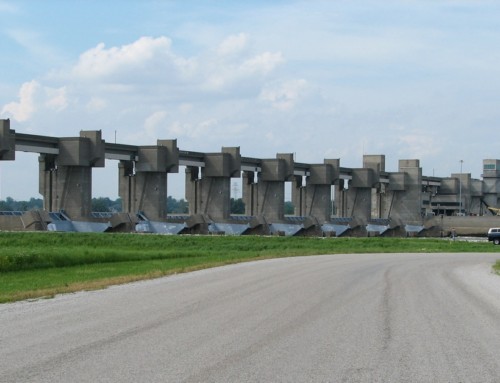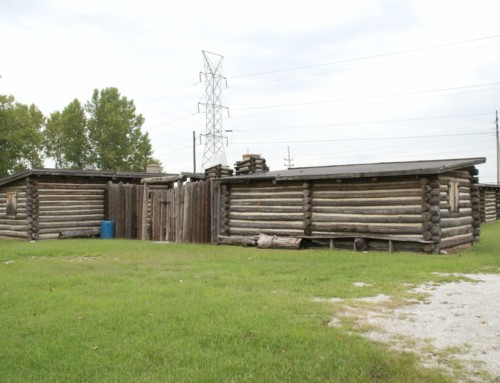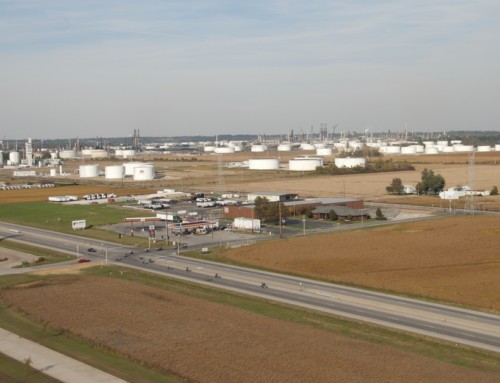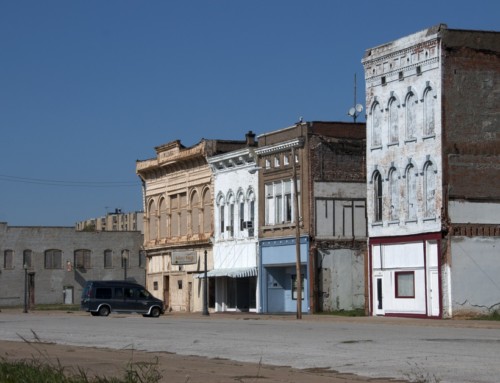Introduction
Nearly as old as neighboring Cahokia, Dupo began as a small French colonial agricultural settlement, then the railroad turned it in into a boomtown nearly overnight. The railroad is still around, and, unlike its neighbors, Dupo has seen a steady population growth for the past century.
History
The area where Dupo is today has probably been continuously inhabited for thousands of years. Early Europeans noted the presence of multiple mounds, many of which contained burials, but few survive today.
In the 1760s, a few French families moved from Cahokia to the floodplain on the other side of a small bridge, to an area known as Prairie du Pont. Fourteen families moved in 1765, and by 1780, Antoine Girardin apparently led a successful effort to formally separate Prairie du Pont from Cahokia, although the villagers remained under the jurisdiction of the same court.
The small community remained focus on agriculture for generations and never gained the momentum to formalize local government. Residents incorporated a school district in the 19th century, but it still took them 20 years after that to get around to building a school. In 1880, Prairie du Pont had just 50 residents, ten of whom were African American.
The area changed dramatically beginning in the early 1900s as railroads set up shop. In 1903, the St. Louis Iron Mountain Railroad established a base of operations in a neighboring village called Bixby; soon after that it purchased by the Missouri Pacific Railroad. The companies began to attract residents, which created a need for housing. In 1905, the village of Dupo was platted. In those early years, the village had more taverns than grocery stores.
When the village was incorporated in 1907, railroad executives wanted a simpler name than Prairie du Pont; local resident Louis Dyroff came up with the idea for shortening it to Dupo. In 1910, Missouri Pacific moved its main operations from Bixby to Dupo, building the expansive switching yards that still dominate the landscape today.
The trains and their coal-fired engines created thick layers of smoke around town. If you hung your clothes to dry outside, there was a good chance that they would come out a darker color than when they started. The rail yards are still active, just without all that smoke, thanks to the introduction of diesel engines in the 1940s.
Dupo has avoided the crippling population losses of many of its neighbors. The area where the old Prairie du Pont settlement was located is between the canal and the railroad tracks, and is still occupied. New developments have been concentrated east of the railroad tracks toward the bluffs. In spite of its proximity to St. Louis, Dupo has retained a small-town vibe.
Exploring the Area
See the East Carondelet page for the Martin-Boismenue House (2110 First St.; 618.332.1782), one of the oldest surviving residences in Illinois. It was one of the original homes in Prairie du Pont but today falls within the boundaries of the Village of East Carondelet.
**Places around Dupo are covered in Road Tripping Along the Great River Road, Vol. 1. Click the link above for more. Disclosure: This website may be compensated for linking to other sites or for sales of products we link to.
Where to Go Next
Heading upriver? Check out Cahokia.
Heading downriver? Check out East Carondelet.
Community-supported writing
If you like the content at the Mississippi Valley Traveler, please consider showing your support by making a one-time contribution or by subscribing through Patreon. Book sales don’t fully cover my costs, and I don’t have deep corporate pockets bankrolling my work. I’m a freelance writer bringing you stories about life along the Mississippi River. I need your help to keep this going. Every dollar you contribute makes it possible for me to continue sharing stories about America’s Greatest River!
©Dean Klinkenberg, 2018





